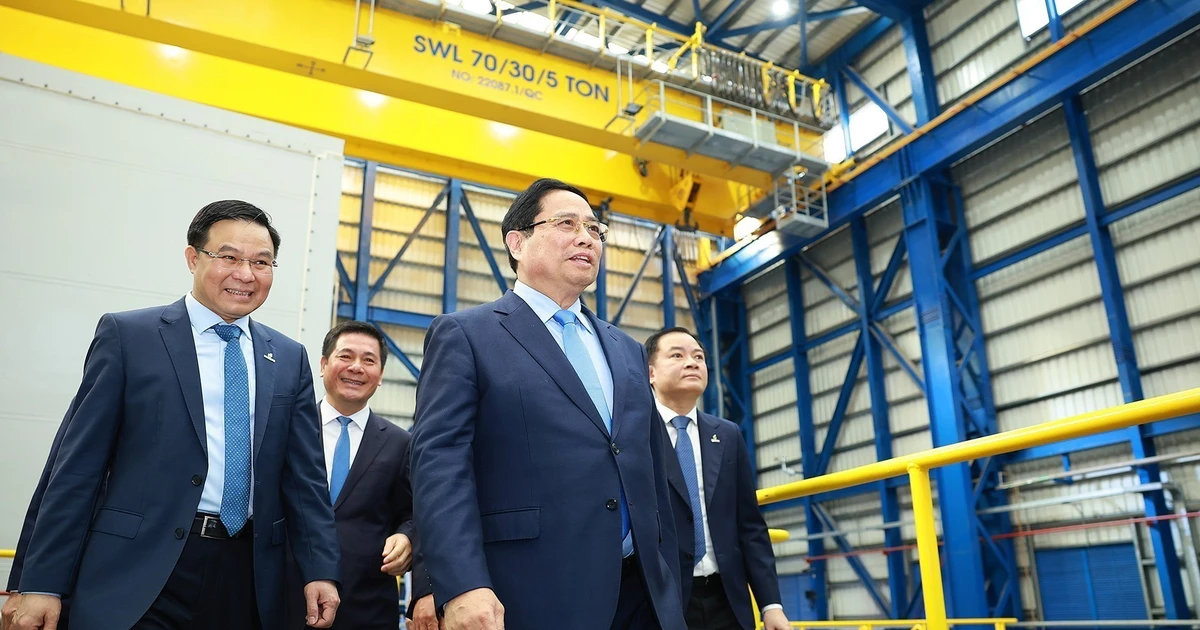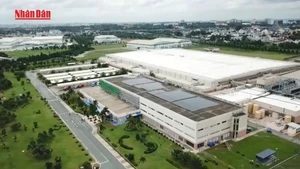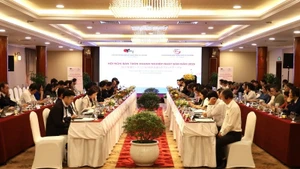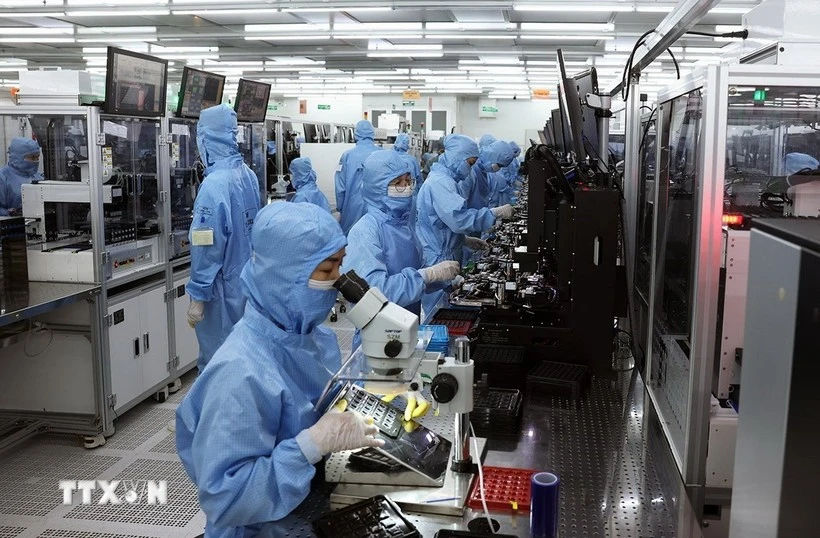Over the past nine months, four out of the region’s six localities recorded double-digit growth rates. Foreign investment attraction has flourished, while industrial production and tourism have surged.
Following the restructuring of provincial-level administrative units, the Red River Delta now comprises six provinces and cities: Ha Noi, Hai Phong, Quang Ninh, Hung Yen, Bac Ninh, and Ninh Binh. Over the past nine months, four of these, namely Hai Phong, Quang Ninh, Bac Ninh, and Ninh Binh, have achieved double-digit economic growth.
These results have helped the Red River Delta post the highest economic growth rate among the country’s six economic regions.
Leading across multiple fields
Bac Ninh topped the nation in foreign direct investment (FDI) inflow in the first nine months of the year, attracting more than 1.509 billion USD.
Hung Yen also posted strong FDI attraction. Director of the provincial Department of Finance Nguyen Duc Tai said the province has focused on cutting and simplifying administrative procedures, reforming working practices, improving the quality of public services, and mobilising investment resources to create breakthroughs in transport infrastructure. As a result, in nine months the province attracted more than 1.5 billion USD in foreign investment.
Following the restructuring of provincial-level administrative units, the Red River Delta comprises six provinces and cities: Ha Noi, Hai Phong, Quang Ninh, Hung Yen, Bac Ninh, and Ninh Binh. Over the past nine months, four of these localities, namely Hai Phong, Quang Ninh, Bac Ninh, and Ninh Binh, have achieved double-digit economic growth.
The region’s Index of Industrial Production (IIP) rose sharply compared with the same period in 2024. Four of the six Red River Delta localities ranked among the top ten nationwide in IIP growth: Ninh Binh, Quang Ninh, Bac Ninh, and Hai Phong. Leaders of Ninh Binh said the province has directed all levels and sectors to closely monitor enterprises’ production and business performance and promptly address difficulties and bottlenecks.
The province has attracted investment in several high-tech, science-based projects that make substantial contributions to the province’s GRDP, including Quanta Computer Inc.’s computer manufacturing plant and McNex Vina Co., Ltd.’s projects to build a purified liquid CO₂ factory and a camera module and electronic components factory.
In Quang Ninh, decisive management measures helped the province achieve GRDP growth of 11.66% in nine months, its highest rate in the past decade; the IIP rose 15.6%, with the processing and manufacturing sector alone increasing 24.07% year on year. Quang Ninh Party Secretary Vu Dai Thang said: “The province has directed all sectors and localities to thoroughly resolve difficulties relating to administrative procedures, compensation, site clearance, filling materials, and land pricing to create the most favourable conditions for enterprises investing in industrial parks and clusters.”
Tourism has also seen strong breakthroughs, with Ha Noi and Ninh Binh emerging as standout destinations. By the end of September, the capital city welcomed 26.07 million visitors, up 23.8% year on year. Total tourism revenue reached 98.36 trillion VND, up 20.7%. The city has launched numerous new and appealing tourism products that meet the entertainment and sightseeing needs of residents and visitors.
Following the administrative boundary merger, Ninh Binh has stepped up its marketing strategy, widely promoting its image as a safe, friendly, and hospitable destination. The province has emphasised inter-sectoral coordination in heritage conservation, value promotion, and maintaining a safe and welcoming tourism environment.
As a result, both visitor numbers and tourism revenue have witnessed strong growth. Visitor arrivals reached nearly 16.8 million, up 27.9% year on year. Total tourism revenue exceeded 17.895 trillion VND, up 41.08%. Recently, the Trang An Landscape Complex, Tam Coc–Bich Dong, and Bai Dinh Pagoda were recognised by the global travel platform TripAdvisor in its “Travellers’ Choice 2025” awards, further boosting Ninh Binh’s visibility on the international tourism map.
Accelerating public investment disbursement
With a focus on implementing strategic infrastructure projects at both local and regional levels, public investment disbursement in Red River Delta provinces and cities has outpaced the national average.
Ninh Binh has aggressively implemented national key projects, especially inter-regional and regional-connectivity initiatives, to expand development space and create strong momentum for fast and sustainable socio-economic growth. Provincial leaders have conducted frequent on-site inspections and held specialised conferences to remove obstacles during project execution. The province’s total public investment allocated for 2025, as assigned by the prime minister, is 28.630,123 trillion VND. As of September 30, 2025, disbursement reached approximately 26.137 trillion VND, equivalent to 91.3% of the plan.
With a focus on implementing strategic infrastructure projects at both local and regional levels, public investment disbursement in Red River Delta provinces and cities has outperformed the national average.
Hai Phong has adopted a flexible and efficient approach to public investment management. Le Anh Quan, Standing Vice Chairman of the Hai Phong People’s Committee, said the city has developed and issued a detailed public investment disbursement scenario; built software to track project progress and disbursement in real time; and ensured full disbursement of funds allocated by the prime minister.
The city has strictly cut 50% of administrative procedure processing time in construction investment. For delayed projects, investors must prepare detailed schedules, mobilise additional manpower, equipment and finances, and work overtime to compensate for delays and meet the disbursement timeline. As of the end of September 2025, Hai Phong has disbursed more than 24.379 trillion VND, equivalent to 68% of the capital allocated by the prime minister, higher than both last year’s rate and its own disbursement scenario (65.9%).
In Bac Ninh, total public investment capital and funding for national target programmes in 2025 amount to 20.3 trillion VND. Of this, more than 18.9 trillion VND was allocated for the year, with the remainder carried over under regulations. Estimated disbursement by October 31 reached more than 12.5 trillion VND, equivalent to 61.3% of the plan.
In 2025, Ha Noi was allocated more than 87 trillion VND in public investment, 1.13 times higher than in 2024. By September 30, disbursement was estimated at nearly 39.3 trillion VND, equivalent to 45.1% of the plan. Although this rate is lower than the national average, in absolute terms Ha Noi remains one of the two leading localities nationwide, with a figure 1.3 times higher than the same period in 2024.
















